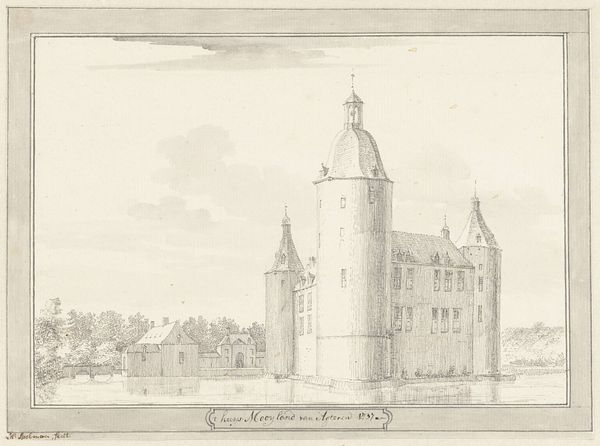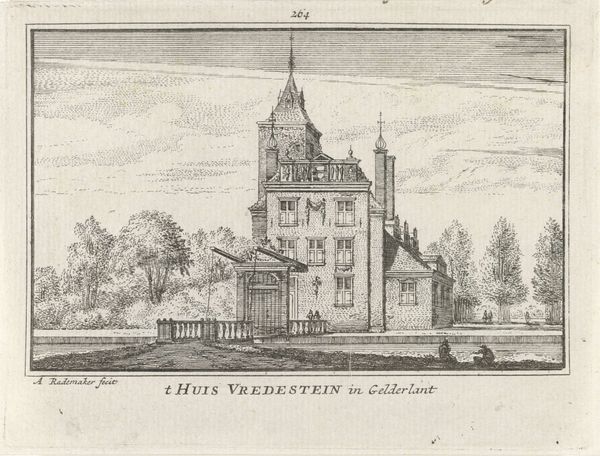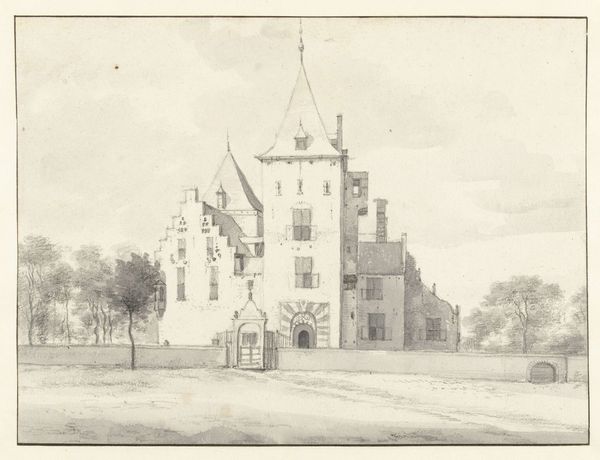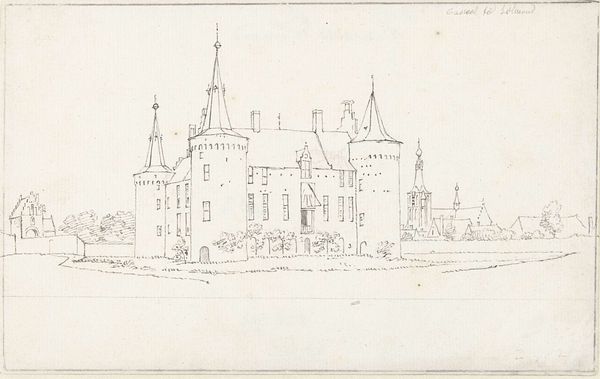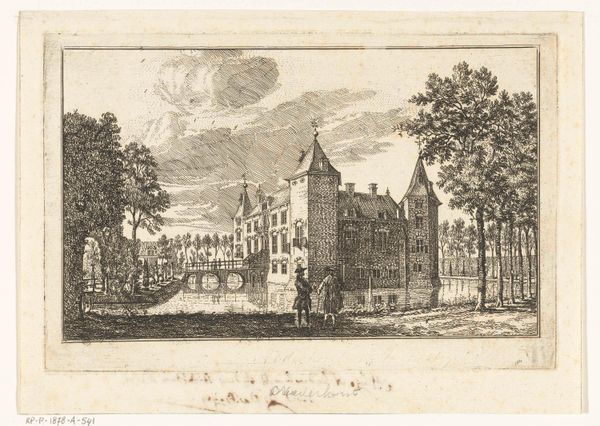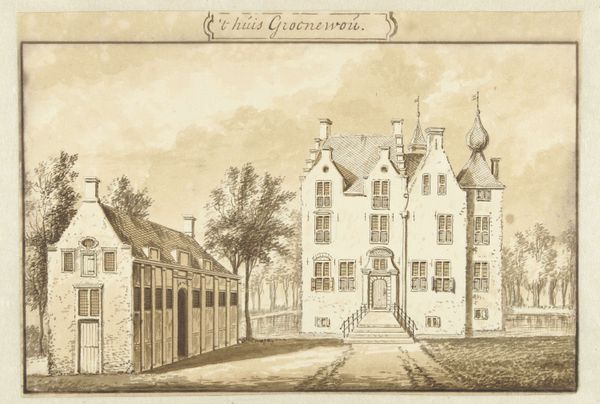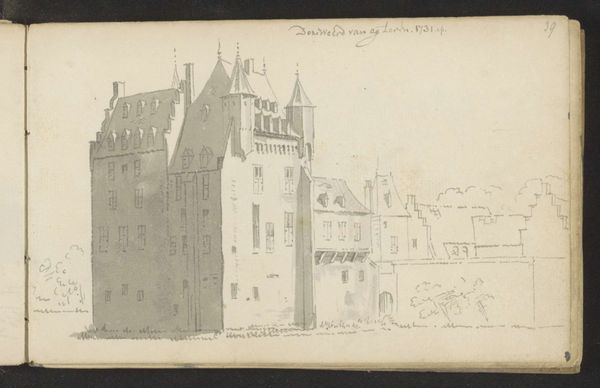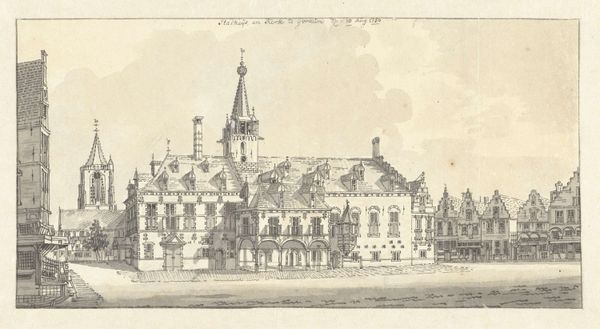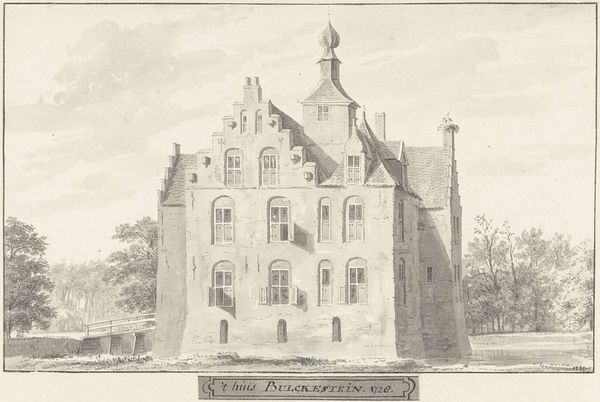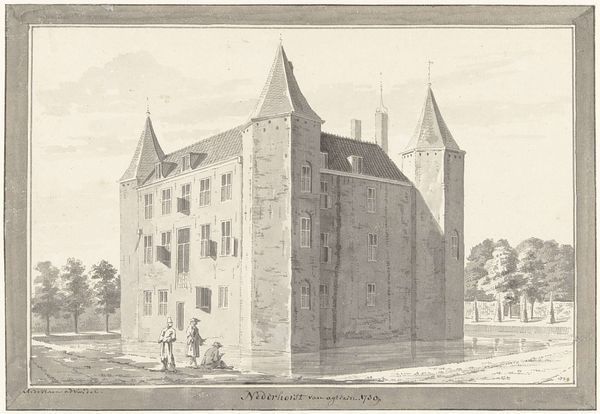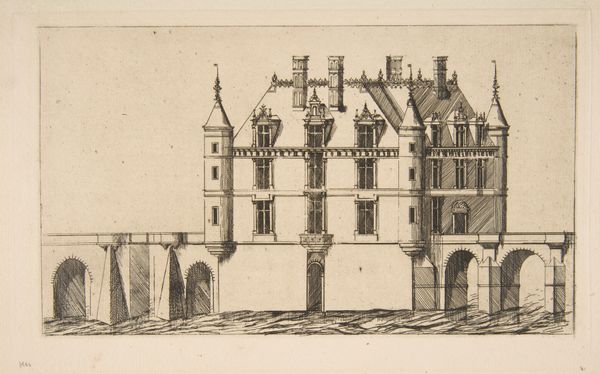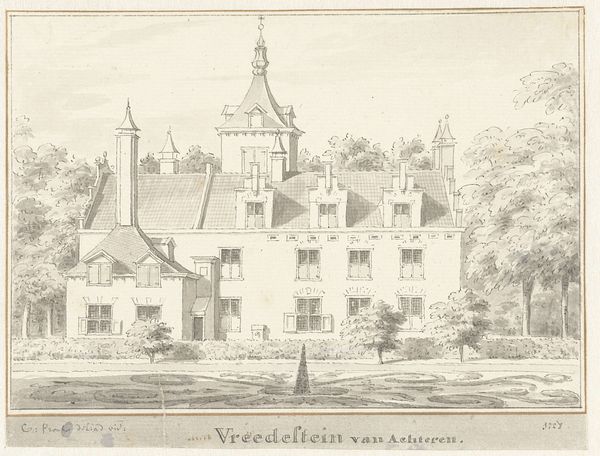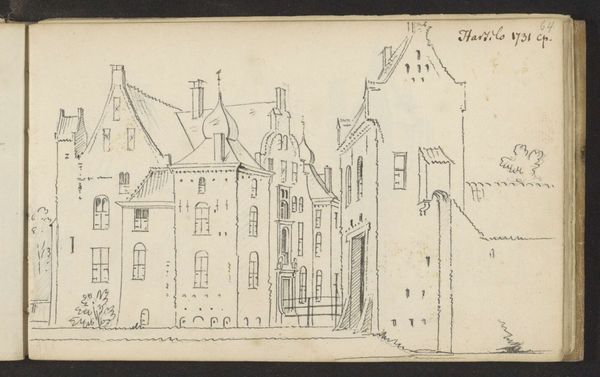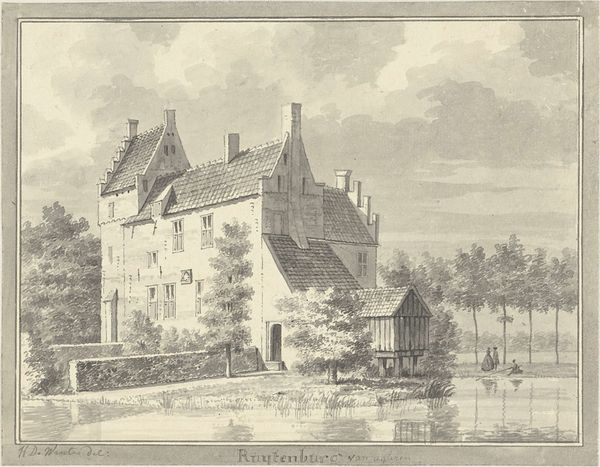
#
architectural sketch
#
aged paper
#
blue ink drawing
#
quirky sketch
#
mechanical pen drawing
#
old engraving style
#
personal sketchbook
#
idea generation sketch
#
sketchwork
#
storyboard and sketchbook work
Dimensions: height 138 mm, width 205 mm
Copyright: Rijks Museum: Open Domain
Curator: This is "Nederhorst" by Jan de Beijer, likely created between 1745 and 1749. It resides here at the Rijksmuseum, a delicate drawing rendered in blue ink. Editor: My first impression is how peaceful it feels, despite being such a formal architectural rendering. There’s a certain quiet dignity about it, almost melancholy, and the thin lines suggest the artist wasn't aiming for hyper-realism, or making an idealized architectural claim. Curator: De Beijer's drawings provide insight into the power structures of 18th-century Dutch society. This type of country estate symbolized wealth, status, and land ownership, so framing it with this precision tells us about the cultural landscape where property and power were visually expressed. We must acknowledge the social implications: Who did this estate serve, and at whose expense was its grandeur achieved? Editor: Indeed. Focusing on the process of its creation, look at the economy of line, the minimal shading. It's a material witness to De Beijer's skills. He used pen and ink to carefully create layers of depth; how much time was involved, and what value would have been assigned to that time and skill? It’s not just the destination but also the journey, from raw materials to this finished document. Curator: Right, and in studying the historical context, the choices he makes regarding perspective reflect specific ideologies, perhaps promoting the owners' position. The lack of any people is quite striking, isn’t it? The emphasis remains solely on the structure and its relationship to the water. It subtly perpetuates ideas of authority, excluding everyday realities from view. Editor: Precisely. And I think looking at the physical nature of ink on paper lets us consider its reproducibility; these drawings often acted as records or documents. This relates to power because architecture, in this way, is made exportable. The control it represented could be disseminated, a paper symbol of what brick and mortar could do. Curator: Thank you. Exploring "Nederhorst" in these ways hopefully prompts us to ask vital questions about how landscapes and properties reflected—and reinforced—inequalities in Dutch society during this era. Editor: By carefully examining the materiality of its production and considering the labor and resources involved, we see art as an active component in shaping social hierarchies, offering an understanding beyond its aesthetic value.
Comments
No comments
Be the first to comment and join the conversation on the ultimate creative platform.
